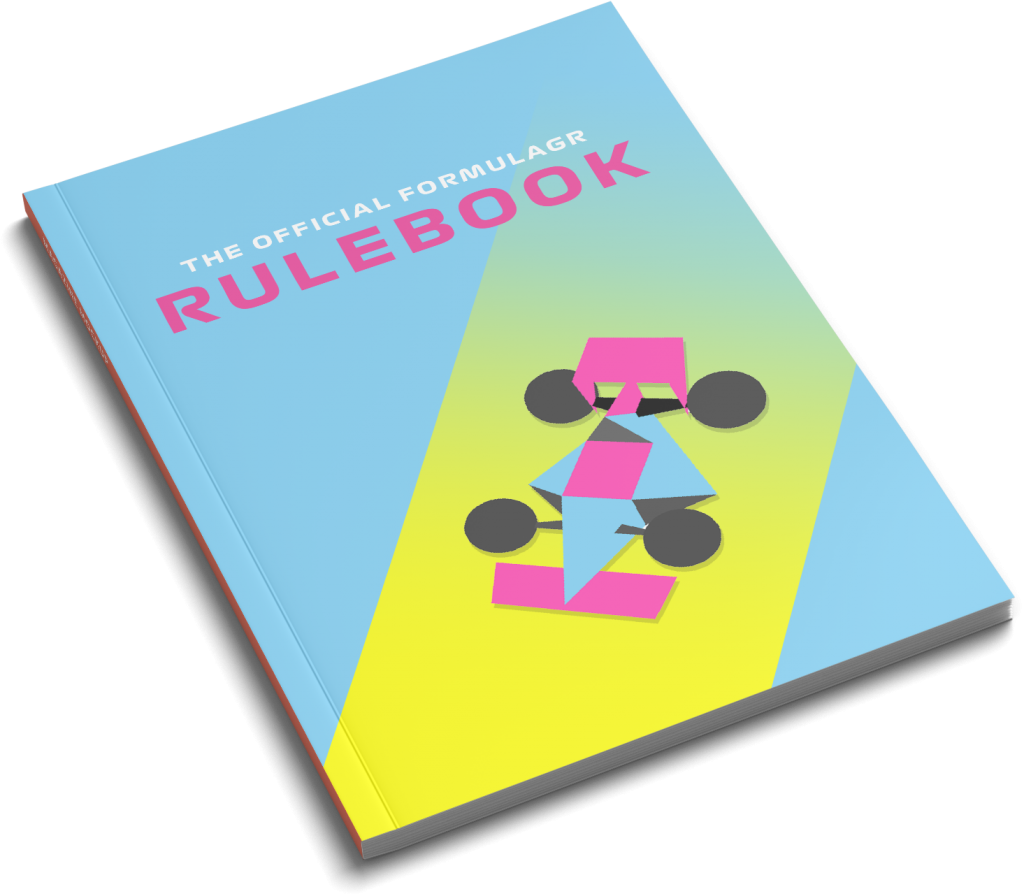If you came here thinking you’d find a competition with simple rules, well, then you were… right! There are a lot of (tempting) depth which one could include in a competition, but lets face it: Most of us are adults with real world challenges. Time isn’t always as limitless as it once was. While there will be lots of depth in terms of covering the championship and recording the history of it – the rules of FGR will be kept simple. Let’s dive in (or should we say “snorkel in”?).

§1: We’ve decided against Qualifying. The disadvantages outweigh the advantages in this department.
§2: The inaugural FGR™ season comprises just 6 races to crown the FGR™ World Champion.
§3: Our rulebook specifies a standardized race distance of 25 kilometers, regardless of the track.
§4: All tracks are selected by some criterias that are close to our hearts: Aesthetics, small world size for better visibility, a pitlane that’s well separated by the track, a pitlane speed limit and space for at least 4 pit crews. The pit crews are provided by FGR™.
§5: For each race, the following points are up for grabs
- Place: 10 Points
- Place: 6 Points
- Place: 4 Points
- Place: 3 Points
- Place: 2 Points
- Place: 1 Point
§6.0: Tyre wear with this years PixelRubber™ tyres is: 5%
§6.1: Fuel Consumption, which in FGR™ equals battery charge, is: 7%
§6.2: Fuel Mass is non existent, due to the fact that we’re using batteries instead of fuel: 0kg
§6.3: Damage of the FGR-01™ is: 10%
§7: The driver with the most points at the end of the season is crowned FGR™ World Champion and receives a real championship trophy sent to them. The second and third placed drivers will receive a trophy as well.
§8: A driver has to be part of a team. Teams must have 2 drivers, with both drivers points getting added up for the team ranking. The owner of the winning team will receive a trophy as well, if the team had 2 drivers racing in 5 out of 6 races.
§9: A driver is allowed to miss a maximum of 1 out of 6 races. Should a driver miss 2 races, the license will be temporarily suspended for the season and made available for another driving on the waiting list. If there are no drivers on the waiting list, the FGR™ administration decides if the inactive driver may keep his license. If a driver got his license suspended, he or she will keep the points accumulated up to that point. The team will keep the points as well.
§10: A team owner is responsible to have both drivers compete in the races. A Team owner doesn’t have to be, but can be, a driver. If a team has one or more drivers not competing in more than 2 races, a teams license can be suspended until the end of the season. If there are no teams on the waiting list, the FGR™ administration may decide to let the team keep their license. If a teams license does get suspended, the drivers can switch to another team, if there are free slots (as long as the drivers are not affected by §9).
§11: While mid season driver changes are not encouraged, we understand it might be necessary in some cases (especially, when it becomes apparent, that one of the drivers will be unable to compete in future races reliably). Should a driver change be necessary, it needs to be approved by the FGR™ administration.
§12: Teams that find themselves unable to keep competing are encouraged to return their license in time, so that new teams can enter, claiming one of the limited licenses.

